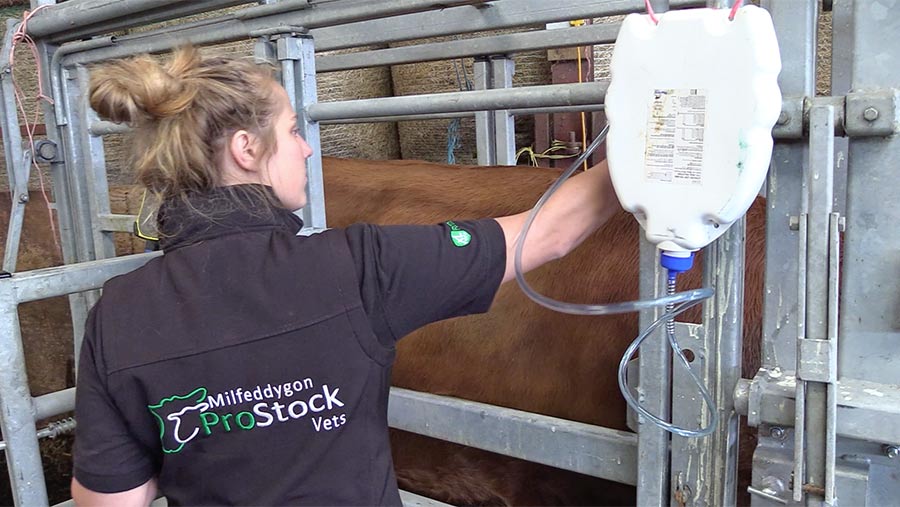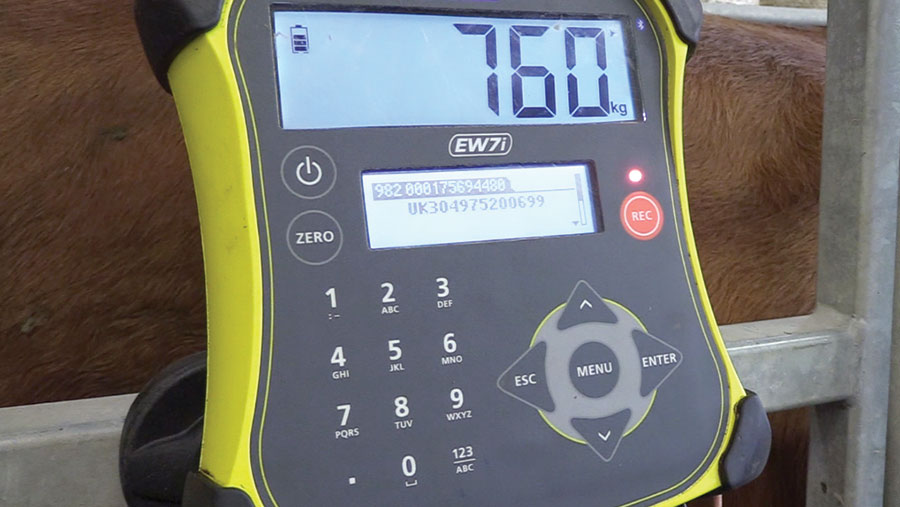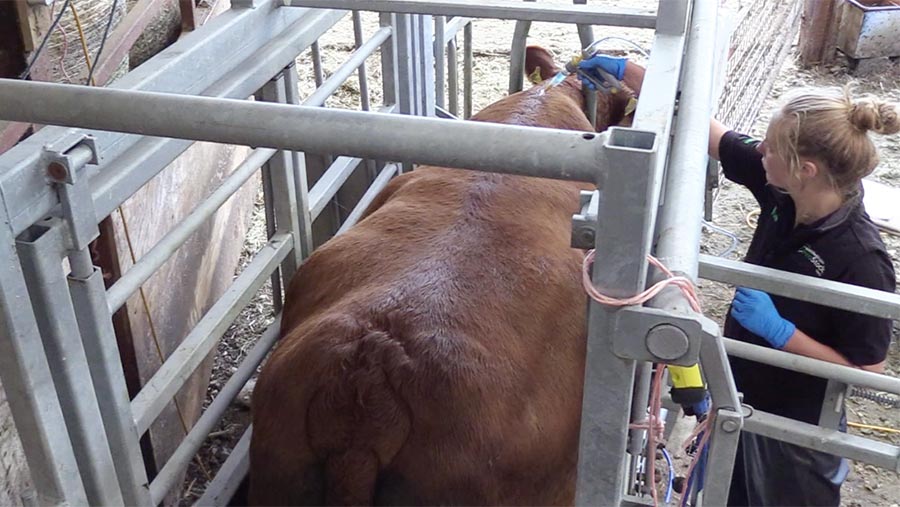Video: Step-by-step guide to administering cattle pour-ons

Correct use of pour-on products increases the chance of the active drug working and limits drug resistance development.
This is according to vet Miranda Timmerman of ProStock Vets, Carmarthenshire, who says there are five main points to consider when planning to use pour-ons in cattle.
See also: Vet Viewpoint: Winter housing, health checks and colostrum
These are referred to as the “five Rs” and, along with talking to your vet, animal health adviser or Suitably Qualified Person (SQP), are a useful source of guidance to consult before using pour-ons.
The 5 Rs:
- Use the right products for the type of parasite
- Treat cattle at the right time
- Dose cattle at the right rate
- Administer wormer in the right way
- Treat the right animal
Watch the video demonstrating how to correctly use pour-ons and read the guide below.
1. Right product for the type of parasite
Pour-ons target different parasites and are active against different developmental stages of parasites.
See also: Q&A: Advice on worming cattle at housing
This means that you should know not just what parasites you are trying to treat but also ensure that you know the age or stage of the parasite lifecycle.
Tips:
- Check withdrawal periods on the label. Most withdrawal periods are 14-28 days but can be 3-143 days.
- Known drug resistance issues should be taken into account. Conduct a faecal egg count (FEC) to determine whether it’s necessary to treat in the first place.
- Different liver fluke products target different ages of fluke (see table below).
Percentage of fluke treated and killed |
|||||
|
Flukicide ingredient |
1-3 weeks |
4-6 weeks |
7-9 weeks |
10-11 weeks |
12+ weeks |
|
Albendazole |
0 |
0 |
0 |
50-70 |
80-99 |
|
Oxyclozanide |
0 |
0 |
0 |
50-70 |
80-99 |
|
Nitroxynil |
0 |
0 |
50-90 |
91-99 |
91-99 |
|
Closantel |
0 |
0 |
50-90 |
91-99 |
91-99 |
|
Triclabendazole |
90-99 |
99 |
99 |
99 |
99 |
| Source: NADIS, adapted from Scops and Noah compendium | |||||
2. Treat cattle at the right time
Timing your treatment correctly will depend on the parasite burden that year, the risk levels of your farm and the age of livestock.
Monitoring daily liveweight gain can indicate when to treat for worms. Youngstock gaining less than target (0.7-0.8kg post weaning) a day may find themselves being held back by worms.
Industry resources like National Animal Disease Information Service parasite forecasts offer seasonal advice on parasite management.
Worms accumulate on pasture through the early summer and present a greater risk to cattle in later summer, although wormers can be targeted at grazing cattle early in the season to reduce pasture contamination.
Tips:
- Faecal egg counts six-to-eight weeks after turnout and body condition monitoring can indicate when early season treatment is necessary.
- Allow time to ensure cattle are dry. Rain two hours after application could wash off the pour-on if cattle are being turned outside.
- Ensure skin is free from cuts and blemishes, as this could cause harm to the animal and mean the pour-on is ineffective.
3. Dose cattle at the right rate
Products are typically labelled with instructions on dosage rates which will be specified as millilitres of product relative to the animal’s liveweight in kg.
It is therefore important to record the weight of animals – either with scales or a weigh band – and carefully read the product label or summary.
Tips:
- Invest in graduated plastic measuring cylinders to measure how much the gun is administering. A set of four cylinders can be bought for £6-£10.
- Check the calibration of the gun at the start of each session and weigh every animal.

Knowing the weight of stock is vital for correct dosing
4. Administer wormer in the right way
Administer the pour-on along the flat part of the animals back, starting at the withers and ending at the tailhead.

Pour-ons are applied along the flat part of the back from the withers to the tailhead
Pour-ons are just one way to administer anthelmintics. Others include subcutaneous injections, ear injections, intra-ruminal boluses and oral drenches.
Ensure you read the label to administer the product in the correct way.

Dosing equipment should be cleaned out with warm soapy water and washed out with clean water.
Tips:
- Administer the pour-on along the flat part of the animals back, starting at the withers and ending at the tailhead
- Do not mix products without veterinary guidance. Mixing may render them ineffective, wasting time, money and possibly contributing to anthelmintic resistance.
- Clean the dosing equipment with warm soapy water, rinse through with clean water and leave to dry ensuring no residue is left in the pipes.
- Check the label for and abide by ‘use by’ and ‘use once opened by’ dates.
- Leave your product out of direct sunlight at 4-25C.

Dosing equipment should be calibrated to ensure correct volumes of active are administered
5. Treat the right animal
Different ages of cattle have slightly different parasite threats, with the general rule being that younger cattle are at higher risk because they have not built up immunity. Consult your vet about a parasite control plan.
Note that withdrawal periods for certain animals, like finishing cattle or dairy cattle, may need to be shorter than breeding animals or youngstock, due to the expected time they are likely to be on farm.
Tips:
- Only use products on animals if you are sure they are licensed for use on that class or age of animal. For example, products might not be licensed for dairy cattle lactating for human consumption.
- Young calves at grass will have higher exposure to parasites living in pasture as grass consumption increases.
- Older cattle generally have better immunity to gut and lungworms, and may not require treatment.
- Animals of all ages should be considered when planning liver fluke control.
